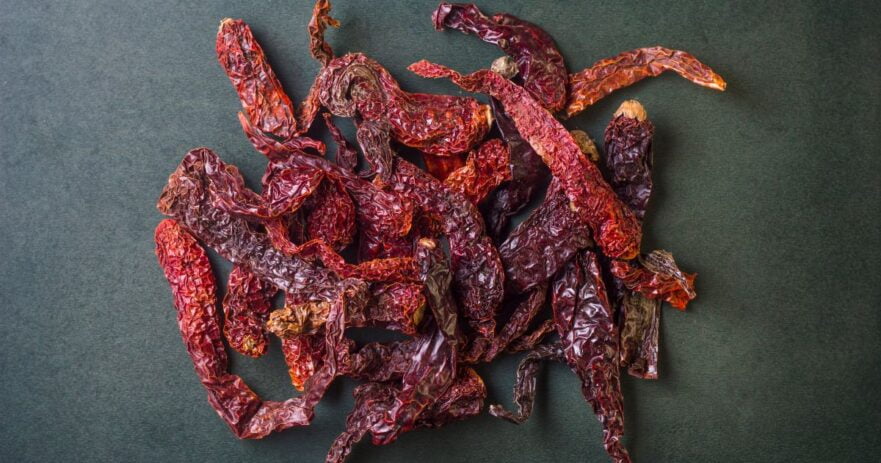In this article about kashmiri chili:
🗺️ Origin and history | 🌶️ Uses | ✨ Appearance and taste | 🧑🌾 Growing – gardening | 👨🍳 Cooking – recipes | 🛒 Where to buy | 🫙 How to store | 👨⚕️ Health benefits | 🌶️ Alternatives and substitutes | ❓ Frequently asked questions
What is Kashmiri chili?
Kashmiri chilis are a bright red, mild chili pepper native to northern India’s Kashmir region. These chilies are well-known for their deep red color and mild heat. Kashmiri chilis are a staple of traditional Indian cuisine sold whole, powdered, or dried.
Many Indian recipes benefit from their distinct color and flavor profile, contributing to their rich, aromatic, and visually appealing nature. These chilis are commonly used in dishes such as rogan josh, tikka masala, and various curry blends, providing a subtle heat without being overpowering.
| Kashmiri chili | |
| SHU | 1,000 - 2,000 |
| Median SHU | 1,500 |
| Flavor | Mildly sweet, fruity undertone |
| Species | Capsicum annuum |
| Origin | India |
| Uses | Curries, sauces, and as a coloring agent in dishes |
Are Kashmiri chilis spicy? How hot are they?
Kashmiri chili scoville: 1,000 to 2,000 SHU
Kashmiri chilis are known for their relatively mild heat, with a Scoville rating ranging from 1,000 to 2,000 units, putting them on the milder end of the heat spectrum, comparable to a peppadew with a heat level of around 1,100 to 1,200 Scoville units. Kashmiri chilis are significantly less spicy than hotter peppers like jalapeños, which range from 2,500 to 8,000 Scoville units.
While they impart some spiciness, their heat is mild, making them ideal for those who prefer a subtle warmth in their dishes rather than an intense kick. Numerous other chili varieties are available for those seeking a more robust spiciness. Serrano peppers, for example, are significantly hotter than Kashmiri chilis, and habanero peppers are even spicier, with a Scoville rating hundreds of times higher.
🗺️ ORIGIN AND HISTORY
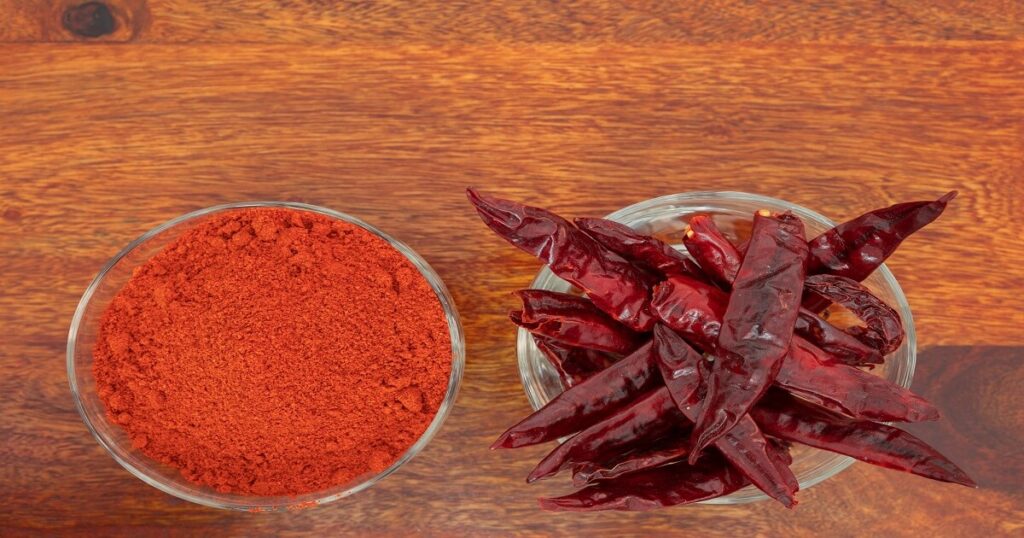
Where do Kashmiri chilis come from?
We can trace Kashmiri chilis’ origins back to the picturesque Kashmir region of northern India, where they have been grown for centuries. These chilis are deeply rooted in local culinary traditions and have become essential to Indian cuisine. However, their popularity has grown beyond Kashmir’s borders. They are now highly sought after worldwide for their vibrant color, mild heat, and distinct flavor profile, which has earned them a place in various dishes from various cuisines.
🌶️ USES
What are Kashmiri chilis good for? How to use them?
Kashmiri chilis are extremely versatile and used in a variety of dishes. They are particularly popular in Indian cooking, adding flavor and color to dishes such as curries, stews, and sauces without making them overly hot.
Incorporating Kashmiri chilis into traditional Indian dishes like rogan josh, tikka masala, or tandoori recipes is a great way to use them. Their mild heat and striking red color make them ideal for these dishes, adding color and depth of flavor. Depending on the recipe and personal preferences, you can use whole, powdered, or dried Kashmiri chilis. Consider dry roasting whole or dried chilis before adding them to your dish to extract the most flavor.
You can also use Kashmiri chilis to create flavorful spice blends or pastes as the foundation for various recipes. For example, combining Kashmiri chili powder with other spices such as cumin, coriander, and turmeric can result in a delectable curry powder or paste. This versatile mixture can spice up various dishes, ranging from meat and fish curries to vegetable stews and biryanis.
Kashmiri chilis, in addition to Indian dishes, can be used in a variety of international cuisines to add a touch of mild heat and vibrant color. For example, you can add Kashmiri chilis to Mexican salsas or enchiladas, Middle Eastern spice rubs for meats, or marinades for grilled vegetables or kebabs. The options are virtually limitless, and experimenting with Kashmiri chilis can improve your dishes’ flavor and appearance.
✨ APPEARANCE AND TASTE
What does a Kashmiri chili look like?
Kashmiri chilis are bright red, distinguishing them from most other chili varieties. They are usually available dried. They are usually wrinkled and measure 3 to 6 inches long and 1 inch wide. The skin of these chilis is lightly rough and has a conical shape with a rounded, blunt tip. The rich red color of Kashmiri chilis is one of their most appealing characteristics, as it adds a visually appealing element to many dishes.
What do Kashmiri chilis taste like?
Kashmiri chilis have a distinct flavor that is mildly spicy and sweet. Their mild heat makes them a popular choice for those who prefer a gentle heat in their food rather than the intense burn of spicier chilis. In addition, Kashmiri chilis have a slightly fruity undertone that adds depth and complexity to their flavor, in addition to their mild spiciness.
🧑🌾 GROWING – GARDENING
How to grow Kashmiri chilis?
Kashmiri chilis thrive best in warm, sunny conditions. These chilis can be grown in containers or directly in the ground if they have well-drained soil and you water them consistently. Regular fertilization is essential for healthy growth, especially during the growing season.
When to pick Kashmiri chilis?
Harvest Kashmiri chilis when they are fully mature and have a vibrant red color. Kashmiri chilis mature in about 90 to 110 days on average. Therefore, picking regularly promotes new growth and a higher yield of chilis throughout the season.
👨🍳 COOKING – RECIPES
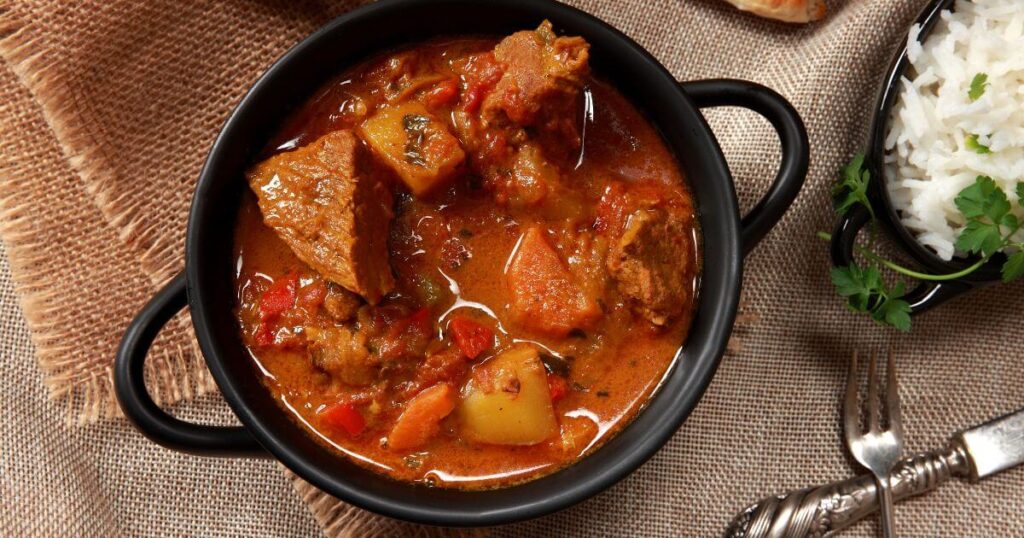
Cooking/Recipe ideas for Kashmiri chili
Kashmiri chili recipes are known for their vibrant colors and deep, rich flavors. A delicious way to use Kashmiri red chili powder is to make the well-known Indian spice blend known as Kashmiri garam masala. Combining chili powder with other spices like cardamom, cinnamon, cloves, and cumin can make a warm, fragrant spice blend ideal for seasoning meat, poultry, and vegetable-based dishes.
Kashmiri chili flakes add a touch of mild heat and a touch of smoky sweetness to marinades, dressings, and spice rubs. For an extra layer of flavor, sprinkle them on pizzas and pasta dishes or stir them into soups and stews. In addition, you can use Kashmiri pepper powder to season roasted or grilled vegetables, meats, and kebabs, giving them a beautiful color and a subtle warmth.
You can rehydrate dry Kashmiri red chili before use by soaking it in hot water, making it an ideal ingredient for flavorful chili pastes or sauces. These pastes can be a base for Indian dishes, such as rogan josh or tikka masala, or as a condiment with grilled meats and vegetables.
The Kashmiri chili pepper has a wide range of culinary applications in a variety of international dishes. Use Kashmiri red chili powder or flakes, for example, to add a touch of mild heat and vibrant color to Mexican salsas, Middle Eastern spice blends, or even as a substitute for paprika in recipes that call for it.
🛒 WHERE TO BUY
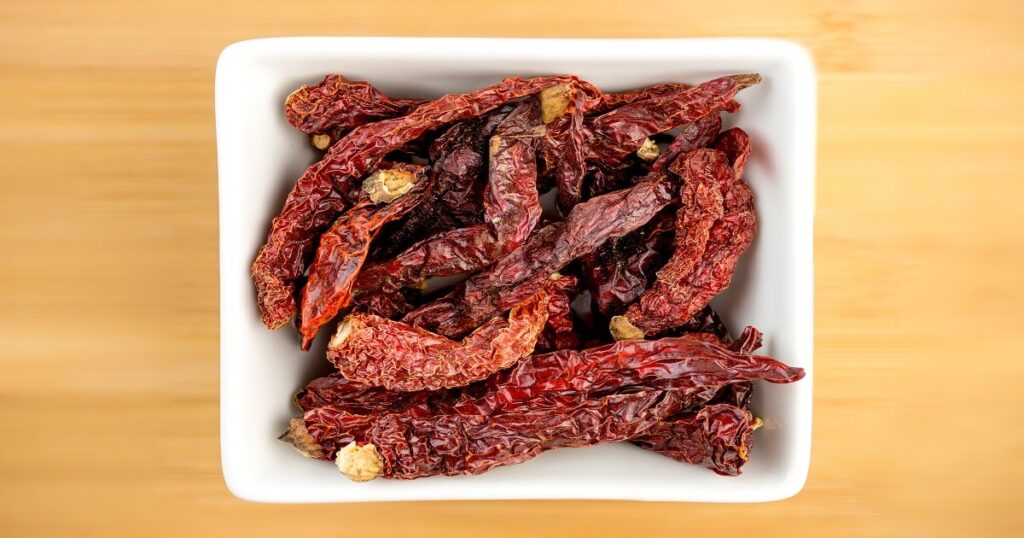
Where can I buy Kashmiri chilis?
You can find Kashmiri chilis as whole dried chilis, chili powder, or chili flakes in most well-stocked grocery stores, especially those specializing in Indian or international foods. If you can’t find them at your local store, try specialty food stores, ethnic markets, or online retailers that sell a wide range of spices and ingredients.
Where can I buy Kashmiri chili plants?
You can buy Kashmiri chili plants from garden centers or nurseries specializing in vegetable plants if you want to grow your own. Look for online retailers who sell a variety of chili plants, including the Kashmiri variety. Choose Kashmiri chili plants with strong stems, green leaves, and a healthy appearance, and avoid any that appear wilted or discolored.
Where can I buy Kashmiri chili seeds?
You can also purchase Kashmiri chili seeds from garden centers or online seed retailers for those who prefer to start from scratch. To ensure optimal growth, plant Kashmiri chili seeds according to the instructions on the seed packet and in a location with plenty of sunlight and well-drained soil.
🫙 HOW TO STORE
How do I store Kashmiri chilis?
When stored properly, dried Kashmiri chilis can last for a long time, often up to a year or more. Store your dried Kashmiri chilis in an airtight container, such as a glass jar or a resealable plastic bag, to ensure the best quality and longevity. Keep the container in a cool, dark, and dry location away from direct sunlight and heat sources, such as a pantry or cupboard.
Kashmiri chili powder and flakes should be stored in airtight containers to preserve flavor and prevent clumping or moisture absorption. Keep the containers in a cool, dark, and dry location as with whole dried chilis. If properly stored, Kashmiri chili powder and flakes can keep their freshness and quality for up to a year.
❤️🩹 HEALTH BENEFITS
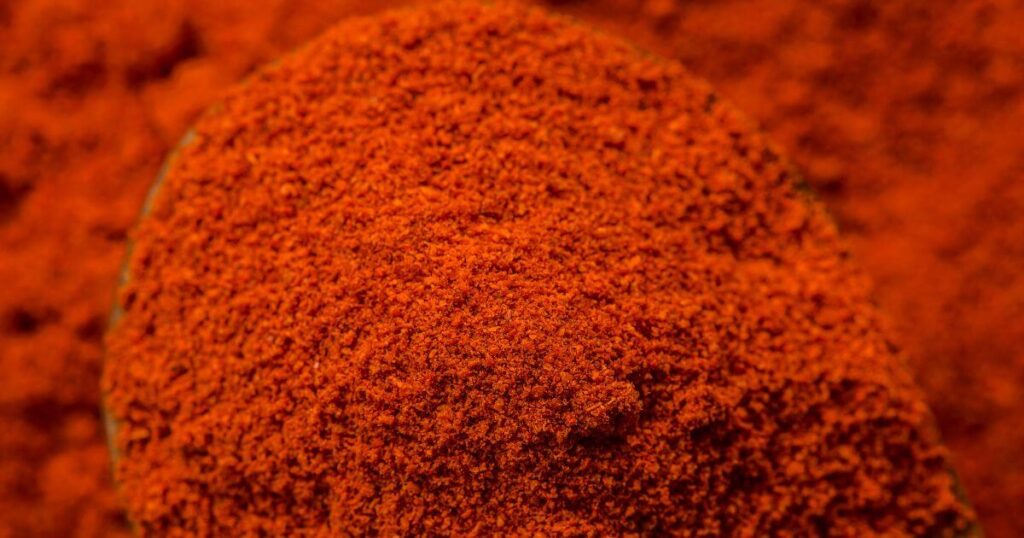
Are Kashmiri chilis healthy?
Kashmiri chilis have a variety of health benefits, making them a nutritious addition to your diet. They are high in vitamin A, which is necessary for maintaining healthy skin and eyes.
Like other chili peppers, Kashmiri chilis contain capsaicin, a compound known for its anti-inflammatory, pain-relieving, and metabolism-boosting properties. However, you should be aware of your spice tolerance, as some people may experience gastrointestinal discomfort after consuming spicy foods such as Kashmiri chilis.
🔄 ALTERNATIVES AND SUBSTITUTES
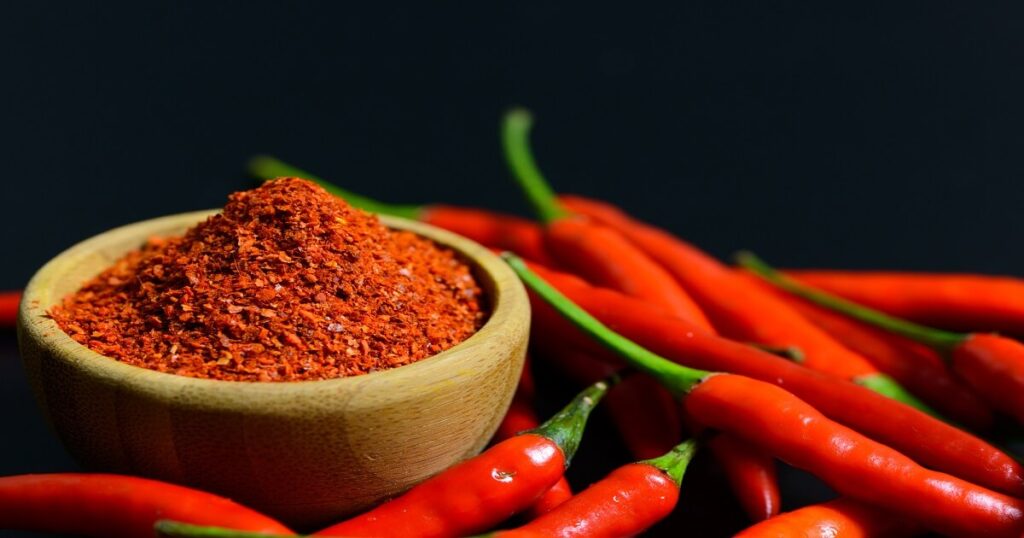
What is a good Kashmiri chili alternative?
Several options are available if you’re looking for a suitable substitute for Kashmiri chilis. Paprika is a popular, easy substitute due to its similar color and mild heat profile. Adjust paprika and cayenne pepper proportions to achieve the desired heat level for a slightly spicier option.
When comparing Kashmiri chili powder to regular chili powder, it’s important to remember that it has a milder heat and gives dishes a more vibrant red color. Regular chili powder is typically made up of a blend of different chili varieties, making it hotter and less color consistent.
How do you pronounce Kashmir chlis?
Kashmiri chilis are pronounced as kash-MEER-ee CHILL-eez.
🙋 FREQUENTLY ASKED QUESTIONS
FAQ about kashmiri chili
Are Kashmiri chilis suitable for those with a low spice tolerance?
Kashmiri chilis have a mild heat level ranging from 1,000 to 2,000 Scoville units, making them an excellent choice for people with a low spice tolerance. As a result, they are significantly less spicy than many other chili varieties, such as jalapeños or Serrano peppers.
How can I incorporate Kashmiri chilis into my everyday cooking?
Kashmiri chilis can add color, depth, and gentle heat to many dishes. Add them to spice blends or pastes, sprinkle them on pizzas or pasta dishes, or incorporate them into international cuisines such as Mexican salsas or Middle Eastern spice rubs.
What is the best way to store Kashmiri chilis to maintain their freshness and potency?
Store your Kashmiri chilis in an airtight container, such as a glass jar or a resealable plastic bag, to ensure the best quality and longevity. Keep the container in a cool, dark, and dry location away from direct sunlight and heat sources, such as a pantry or cupboard.
